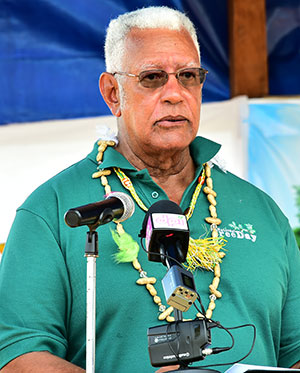BY 2015, the Guyana Sugar Corporation (GuySuCo) had amassed a debt of more than $82 billion. But how did sugar, which was once king, become such a strain on the public purse, draining billions of dollars from the national budget in bailouts and subsidies from 2015 to 2017 alone totalling approximately $32Billion?

This week on Government in Action, we begin a two-part series whereby we will take an in-depth look at how opportunities to take care of the well-being of thousands of sugar workers were squandered after the European Union (EU) announced the removal of preferential prices since 2006. We will also look at the deep concern the current administration has for the growing number of displaced workers and what is being done to help prepare them for a future beyond the fields and the mills.
Evolution of the Sugar Industry At the start of the 20th century, there were 11 estates located in Leonora, Uitvlugt, Wales, Diamond, Enmore, La Bonne Intention, Ogle, Albion, Blairmont, Rose Hall and Skeldon. The sugar industry remained at the heart of the economy and accounted for more than 63 percent of agricultural output and more than 20 percent of the gross domestic product in 1976. GuySuCo was producing 337,776 tonnes of sugar and had a workforce of 28,406 persons at that time.

Over the last decade, the sugar industry has had to be propped up by bailouts at the expense of the provision better quality education and social services for the people of Guyana. GuySuCo incurred total losses of $40 billion with sales of $230 billion from 2008 to 2015. By 2015, the management of the company had accumulated a mere $11 billion in internal equity and had decreased working capital by $25 billion. Minister of Agriculture, Mr. Noel Holder, while delivering his 2018 Budget speech, said production of the sweetener is expected to fall to 152,000 tons this year, a 17.2 percent decline over last year’s output.
“GuySuCo is the single, oldest and continuous industry in Guyana and it is haemorrhaging. Government cannot afford to keep on bailing it out. There has to be change, the very nature of the change is something that is still to be decided, but the model that we inherited and the plantation model that we have used for three and a half centuries have failed. The sugar corporation is costing us billions; “If I can put that money into the school system, the public health system and the University of Guyana, you would have seen a transformation,” the President said on the Ministry of the Presidency’s Public Interest Programme on November 4, 2016.
According to the ‘State Paper on the Future of the Sugar Industry’, which was presented to the National Assembly by Minister Holder, the sugar industry trails mining, construction and the rice industry in its contribution to the national economy. The State Paper noted that other industries such as the wholesale and distribution trade, transportation and storage and information and communication technology also contribute more than the sugar industry to the output of the country.

The sugar industry had for many years been operating in a largely protected market from 1959 to 2009, since Guyana was among nine countries that benefitted from the Commonwealth Sugar Agreement. Secondly, along with other African, Caribbean and Pacific (ACP) states, it benefitted from the Sugar Protocol under the ACP-EU Preferential system. Preferential sales to the EU market accounted for 50 percent of the company’s sugar output and 70 percent of its revenues. In 2005, the European Agriculture Council decided to reduce the guaranteed price for sugar by 36 percent over a four-year period that begun in 2006. The EU was forced to withdraw the preferential treatment, because of global pressures to liberalise trade.
As a result, the EU allocated more than €1.2 billion for the restructuring and diversification in the 18 countries that had been affected. These funds allowed counties to invest and add to the value of their products as in the case of Mauritius, or to diversity their industries as was done by Trinidad and Tobago. The EU provided a total of GYD$348.5 billion from since 2006 in budgetary support to compensate for the 36 percent cut in the preferential price. It was not clear how much of an impact those funds had in terms of preparing the local sugar industry for the inevitable and there are questions about the previous administration’s decision to plug $47 billion dollars into the failed Skeldon Sugar Modernisation Project.

Little was done to stop the slide and today the management of GuySuCo estimates that the Government of Guyana would have to provide annual subsidies averaging $17 billion over the next four years to keep the estates open and operating, an expense that the economy cannot bear.
So what’s next? The government has issued a White Paper, which outlines its plans to modernise, contract and diversify the sector. A small but profitable sector will serve Guyana better than a cumbersome and faltering industry, which has lost its profitability. Minister Holder in his 2018 Budget presentation pointed out as much, noting that the industry cannot function in its current state.
“The country’s framework for governing the sugar industry has to evolve. It must become more in tune with reducing vulnerabilities, resolving institutional and legacy issues and diversifying away from sugar to more industries. “Mr. Speaker, despite the magnitude of subsidies, there will be no positive impact on the financial state of GuySuCo. The economy simply cannot afford it,” he told the National Assembly.
Before any decision could be made, though, the government installed an Interim Management Team to manage the company’s affairs in June 2015. In that same year, the corporation sold the Skeldon co-generation plant and a portion of land under its control for $5.1 Billion. Those proceeds were used to meet operating costs and a part of the capital expenditure. Further, an urgent injection of $12 Billion was needed to reap the crop in season and government was forced to provide a bailout.
“Since taking office, the government has supported GuySuCo with $32 billion with a $6.3 billion allocation in 2018 and another $2.3 billion estimated for 2019. Capital investment at $12 billion will be required over the next three years to ensure that the sugar production targets are met,” he said.
As part of its plan to return the industry to profitability, government ordered the closure of the Wales Estate and reduced the workforce at other underproducing estates in order to bring down operating costs. Government has indicated that it is focusing on creating three large estates; Blairmont, located on the West Bank of Berbice, Albion, located in Rose Hall in East Berbice and Uitvlugt, on the West Coast of Demerara.
“Guyana is trying to preserve its industry. That is why there will be a Blairmont and that is why there is going to be an Albion; and we will preserve as many of our plantations and estates as possible. Uitvlugt will remain, but we have to deal with the problems of cost,” President Granger said at the opening of the Mahaica-Berbice (Region Five) Chamber of Industry and Commerce’s Expo and Trade Fair at the Bath Settlement Community Ground, West Coast Berbice, in April this year.
With the near bankrupt position of the corporation being recognised by the government, a Commission of Inquiry (CoI) was established by the administration to examine the situation in the sugar industry and determine what needed to be done to make it viable again. Government believes that the sugar industry is too important to the people of Guyana and to the country’s economy to be treated like a political football. A consultative approach to decision-making, which included all stakeholders is the guiding policy of the administration.
It embarked on discussions with the opposition, GuySuCo, the Guyana Agricultural and General Workers’ Union (GAWU) and the National Association of Agricultural, Commercial and Industrial Employees (NAACIE), to determine the course of action for the future of the corporation GuySuCo in the interest of all stakeholders. That the opposition and unions came together with the government to brainstorm a solution and a way forward is testament that the gravity of the situation has been realised by all.
In part two of Government in Action, we will take a look at the work of the Special Projects Unit, its successes in attracting foreign interests in the privatisation of the industry and how the industry will be preserved to contribute to the GDP. In addition, we will discuss important considerations for the future of displaced sugar workers.





.jpg)








